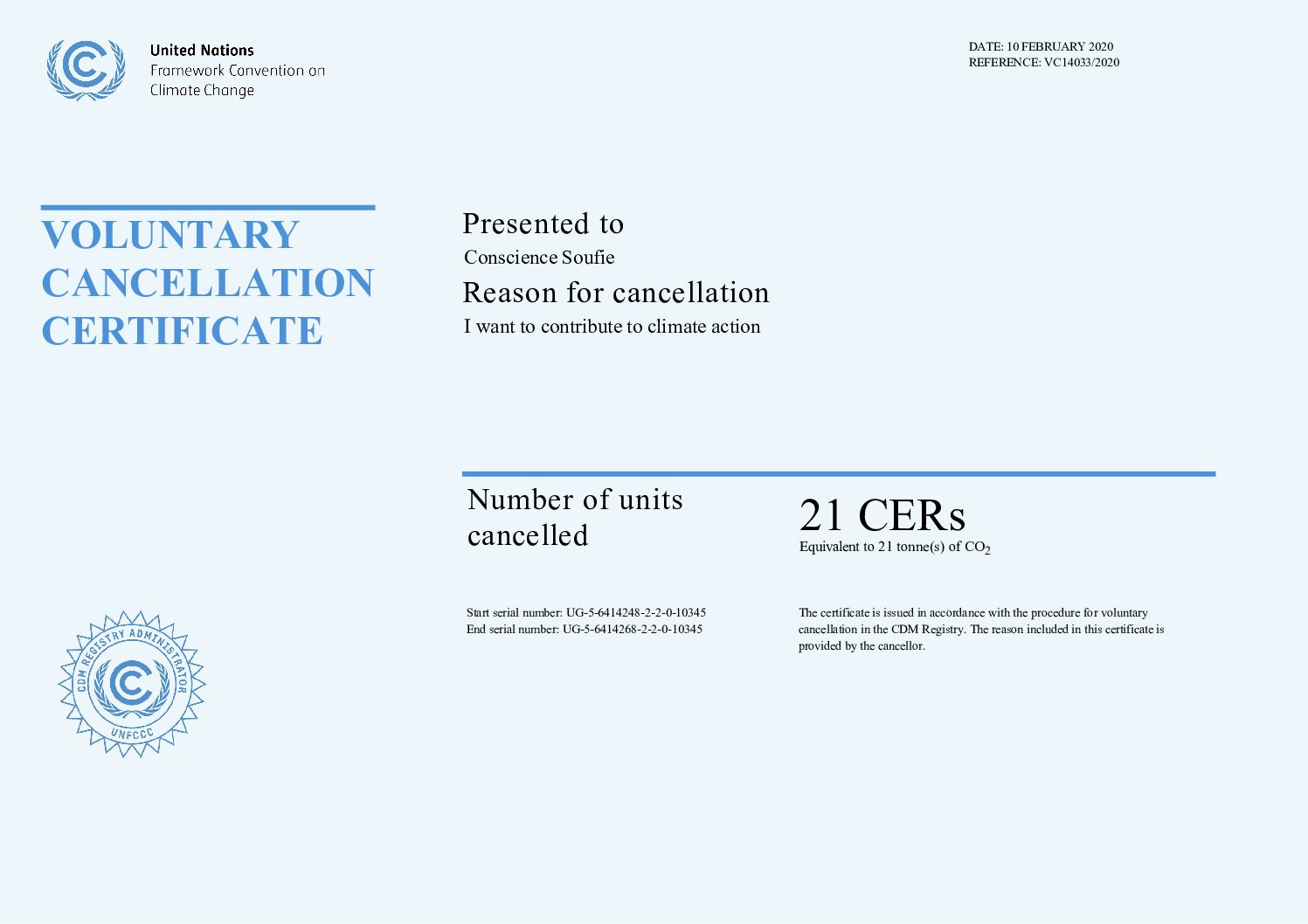Introduction to Carbon Compensation through the United Nations Carbon Offset Platform
source: https://offset.climateneutralnow.org/aboutoffsetting
Offsetting is a climate action that enables individuals and organizations to compensate for the emissions they cannot avoid, by supporting worthy projects that reduce emissions somewhere else.
The greenhouse gas (GHG) emissions reduced through offsetting are measured in UN Certified Emission Reductions (CERs). The CERs are generated from Clean Development Mechanism (CDM) projects. These projects, which are located in developing countries, earn 1 CER for each metric tonne of GHG emissions they reduce or avoid and are measured in CO2 equivalent (CO2-eq). The CERs can then be bought by people and organizations to offset their own unavoidable emissions or as a contribution to the global climate action.
How projects reduce emissions
The CDM projects can, among other approaches:
– Replace the use of dirty fossil fuels with clean renewable energy (wind, hydro, solar, biomass);
– Reduce energy consumption and the use of fossil fuels through energy efficiency measures (clean cooking stoves, energy efficient light bulbs);
– Capture already released carbon in trees and other plants (reforestation and forest regeneration projects).
CDM projects have been responsible for avoiding more than 1.8 billion tonnes of GHG emissions. That is equal to removing more than 300 million cars from the road each year, or installing 400,000 wind turbines, or the same amount taken out of the atmosphere by more than one billion acres of forest per year.
How the projects are seclected?
The CDM process involves variety of stakeholders such as the project participants who own the projects, host-country national authorities who oversee national implementation, independent auditors know as the Designated Operational Entities, the UNFCCC CDM Executive Board and its secretariat. At a higher level, all CDM work is coordinated and directed by the UNFCCC Conference of the Parties to the Kyoto Protocol (CMP), the ultimate body responsible for the implementation of the Kyoto Protocol where all member states take collective decisions.
It is a global platform. UN does not collect the payments. You are paying the projects directly. 100% of your payment goes to the project you choose. Only payment transaction fees may apply. On your payment statement you will find the project provider as beneficiary.
How are the flight emissions calculated?
Various calculators have been developed to work out how much carbon dioxide you produce on a flight. The most basic just look at how many miles you’ve flown. We are using: www.carbonfootprint.com
This free online carbon footprint computation tool calculate the distance between the airports selected, using the greater circle method. This is then multiplied by the appropriate emissions factor specific to the type of flight (domestic, short haul or long haul) and the class of seat taken (e.g. economy class, business class etc.). The emissions factors include the distance uplift to compensate for planes not flying using the most direct route i.e. flying around international airspace, stacking etc.
Compensation carbon footprint of program « Entering into Silence »
Carbon Foot print calculation (flights only, including return flights) for the program is 21 ton.
We chose a project in Africa in order to do something back for the continent where we are having out program: Project 10345 Institutional Improved Cook Stoves for Schools and Institutions in Uganda https://offset.climateneutralnow.org/institutional-improved-cook-stoves-for-schools-and-institutions-in-uganda.

Compensation carbon footprint of our program « Retraite itinérante dans le désert 2020 »
Carbon Foot print calculation (flights only, including return flights) for the program is 16 ton.
Conscience Soufie chose to support the same project: Project 10345 Institutional Improved Cook Stoves for Schools and Institutions in Uganda.










